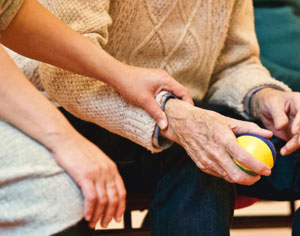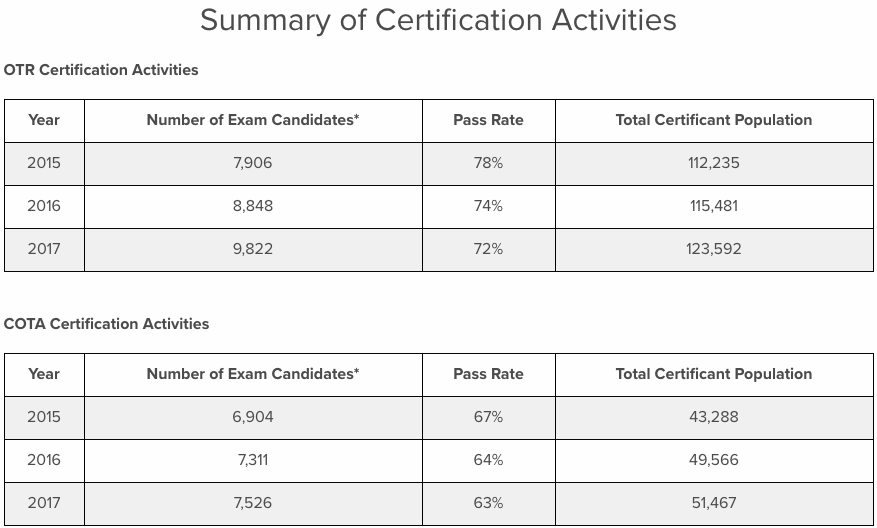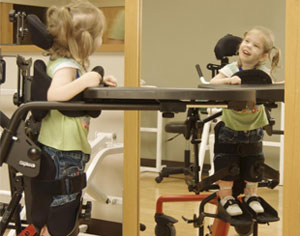
Written by Stephanie Shane OT/L, Founder of “Pass the OT”
Most of the time, students have a difficult time breaking down the question so that they understand what the question is really asking or they have difficulty choosing the correct answer
As you get closer to your exam date, it is important to do an overall review. This is when you may want to look at flashcards, overall study guides, and take cumulative tests. This is the time to focus on material that you are less interest in or are consistently week in (i.e., nerves in the hand, feeding and swallowing, ACL, IEP).


1. Demonstrate a concern for the safety and well being of service recipients.
2. Kindness, charity, helping others, preventing harm, removing conditions that will cause harm, helping those with a disability.
A frame of reference is a theoretical basis for a treatment approach. This chart outlines the frames of reference commonly used in occupational therapy treatment and provides examples of how these frames of references are applied.


1. Class I- no limits to activity. MET 6.5
2. Class II- Slight activity limit, comfort at rest, ordinary activity causes fatigue, pain, dyspnea, and palpitations. MET 4.5
Development at 0-3 Months “Bobbing Headed Billy” … who accidentally rolls to side

Although both the OT (Occupational Therapist Registered) exam and the OTA (Certified Occupational Therapy Assessment) are developed and administered by the National Board for Certification in Occupational Therapy, or NBCOT®, the term “NBCOT® exam” typically refers to the OT exam and OTA exam.


Handwriting is a fundamental skill for anyone school age and above. The underlying skills required for handwriting, as well as ideas for therapeutic activities to address handwriting with children, are reviewed in the following chart.
An individualized education program, or IEP, is a written plan that specifies goals and objectives for learning for students in the public school system that have been identified as having a disability. IEPs are mandated for students with disabilities by the Individuals with Disabilities Education Act (IDEA) of 2004.


C bar splint
Median Nerve Injury
Used to maintain web space
No joint stabilization
People who cannot move the thumb away from the rest of the hand. It is an inability to abduct the thumb. High median nerve injury at the elbow or proximal forearm.


Physical agent modalites are those procedures and interventions that are systematically applied to modify specific client factors when neurological, musculoskeletal, or skin conditions are present that may be limiting occupational performance.
Chronic obstructive pulmonary disease, abbreviated COPD, involves chronic inflammation of the lungs that reduces airflow. COPD is progressive and there is no cure. It is the third leading cause of death in the United States. COPD primarily affects middle aged and elderly adults and is not contagious.


This scale was developed in 1972 by Chris Hagen, PhD, Danese Malkmus, M.A. and Patricia Durham, M.A. of the Communications Disorders Services Department of Rancho Los Amigos National Rehabilitation Center in Downey, California.
The term “bottom up” and “top down” refer to the approach occupational therapists take when evaluating and treating patients. This chart will focus on the definitions and differences between these two approaches.


A device that allows switches to be mounted on or near the headrest of a wheelchair.Switches are activated by moving the head to press the switch.
FUNCTIONAL STATUS BY SPINAL CORD LEVEL BY STEPHANIE SHANE OT/L “PASS THE OT”


The following charts will review types of wheelchairs, the parts of a wheelchair, and various assistive technology items that people who use wheelchairs utilize.
This handout is a supplement to the audio lesson of the same title. The following chart will review the definition, symptoms, and interventions for multiple sclerosis, amyotrophic lateral sclerosis, Parkinson’s disease, Guillain-Barre Syndrome, and myasthenia gravis.


People with mental health diagnoses often display certain patterns of behavior. The following charts will review mental health diagnoses, some of the behaviors associated with mental health conditions, and the therapeutic approaches that have been determined to be effective in addressing these behaviors.